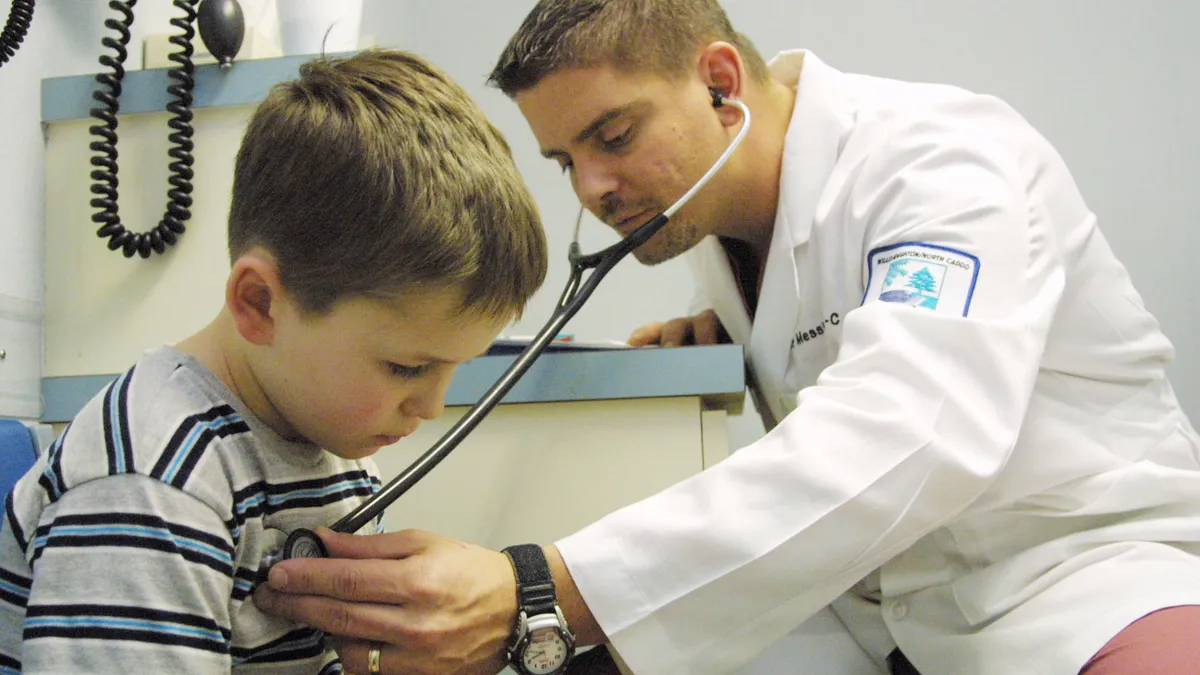The term “tripledemic” has become part of the American lexicon this year as the country grapples with a surge of flu, RSV (or respiratory syncytial virus) and COVID-19 cases. The spike is leading to near record levels of respiratory illness numbers and the peak winter season is far from over.
Against that backdrop, supplies of medicines needed during the season are beginning to run thin. The Food and Drug Administration announced in November that there was an “acute shortage” of a key amoxicillin product used for treating infections in children that are common during the season.
The FDA noted that shortages of a form of amoxicillin used to make liquid doses could “lead to potentially serious or life-threatening situations in particular in the pediatric population” as the respiratory illness season peaks.
There have also been widely reported shortages of children’s pain and fever relievers, such as acetaminophen and ibuprofen. Earlier in December, the FDA also noted localized shortages of the antiviral drug oseltamivir phosphate (Tamiflu), though the agency said there was not a national supply shortfall.
With demand surging, the two drugstore giants — CVS and Walgreens — have moved to limit sales of over-the-counter children’s fever relievers including acetaminophen and ibuprofen, the companies confirmed this week.
Walgreens noted in a statement that the caps are meant to “prevent excess purchasing behavior” as demand surges.
“With parenting and taking care of a child, it accentuates the need because nobody wants to see anyone sick, let alone a child,” said Joe Slota, senior managing director with FTI Consulting. “Look at what [consumers] did during COVID. How many closets were becoming Seven Elevens?”
Forecasting the flu
The federal government has already spent more than a decade working to reduce drug shortages from their perilous peak in 2011, when the country saw more than 250 within a year.
In a report last year, the FDA noted that the COVID-19 pandemic has increased the risk of drug shortages due to potential spikes in hospitalizations and manufacturing lines that were converted to make virus-fighting drugs and vaccines. However, the agency noted that the number of actual drug shortages has not significantly increased thus far.
“My understanding was there was an expectation that this season would be worse, and that was factored into the forecast. But it’s much worse than the forecast anticipated.”

John Gray
Professor of Operations, Ohio State University's Fischer College of Business
In the case of the pain reliever and amoxicillin shortages this year, exploding demand goes a long way toward explaining the supply constraints. But the question remains of why there isn’t more supply chain resilience to handle spikes in need.
Every year, drug makers try to match supply to demand ahead of the cold and flu season. That means trying to predict transmission and illness levels — a difficult feat made even more complicated in the COVID-19 era.
“The last few seasons were very low due to the masking and distancing in terms of colds and flu,” said John Gray, a professor of operations with Ohio State University’s Fisher College of Business. “My understanding was there was an expectation that this season would be worse, and that was factored into the forecast. But it’s much worse than the forecast anticipated.”
With certain drugs, matching supply and demand can be even more difficult.
“I've seen active ingredients that take a year, year and a half, to procure,” Slota said. “You need to go out that far following what your demand signal is going to be. Once you get the API [active pharmaceutical ingredient], it’s a matter of your typical throughput. In manufacturers who have a high number of SKUs, that could take a while because they have to be put it in a queue.”
No short-term answer
Weighing on the amoxicillin shortage are capacity constraints. The specific drug’s production process and equipment lack flexibility, Gray noted.
“So you can’t ramp up some other line really quickly to make really anything based on penicillin,” he said. “There’s not a short-term capacity answer for this.”
In a normal year, demand roughly meets forecasts, and drug makers can meet all the orders. But if no slack is built into the system, demand that exceeds estimates means a supply shortfall. What’s more, companies have little market incentive to produce more or expand manufacturing capacity beyond the best available demand forecast.
“The challenge in these types of products is the margins are very low,” Gray said. “The contracts don't reward excess capacity, the buyers don't reward excess capacity. Put yourself in the supplier or manufacturer’s shoes. You have this low margin product, you're probably going to produce the forecast but not really try to ramp up much more.”
The U.S. also suffers from a lack of qualified amoxicillin drug manufacturers. In a November release, USAntobiotics, which according to the company is the only licensed domestic manufacturer of amoxicillin and amoxil clavulanate, blasted the practice of offshoring as contributing to amoxicillin shortages.
“The fact that there is no American manufacturer of the [API] required to produce this critical medication is nearsighted and misguided,” the company said.
All those of market challenges could mean a system-wide solution would be needed to prevent future shortages.
As Gray said of the amoxicillin shortage, “For this particular case, with the capacity being difficult to ramp up and ramp down and demand being variable year to year, it seems as though some form of … public investment in inventory or capacity might be needed, or some substantial reform of purchasing practices that somehow requires resilience to be built into purchasing decisions.”
This story was first published in our Procurement Weekly newsletter. Sign up here.






















